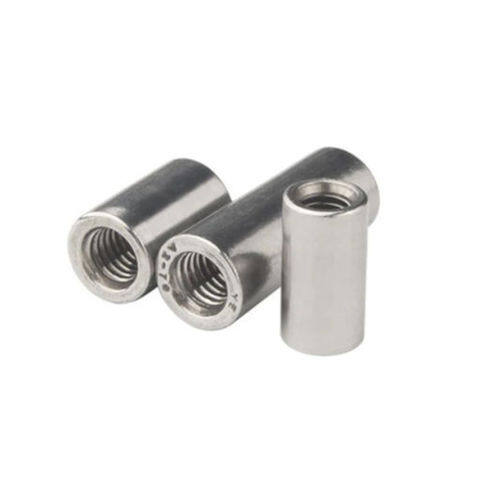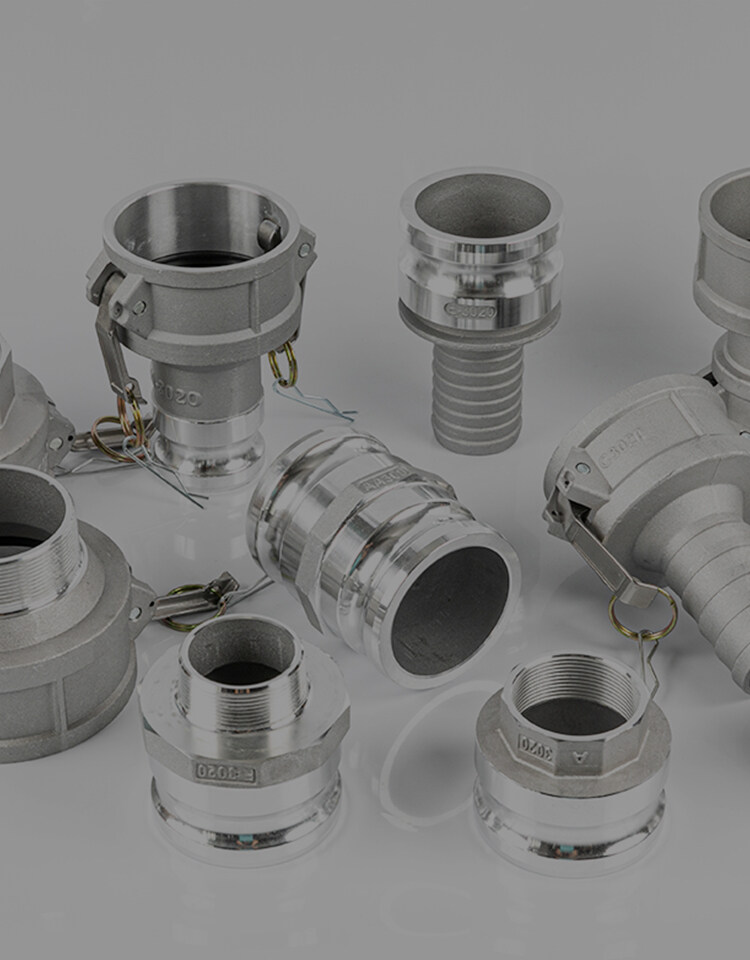Erreur de format d'e-mail
emailCannotEmpty
emailDoesExist
pwdLetterLimtTip
inconsistentPwd
pwdLetterLimtTip
inconsistentPwd

Nouvelles
Ici, vous pouvez décrire un morceau de texte que vous souhaitez exprimer

The Ultimate Guide to Connector Coupling Nuts: Ensuring Robust and Reliable Fastening Solutions
The connector coupling nut emerges as a fundamental component in the realm of mechanical fastening, bridging the gap between simplicity and functionality. These nuts are indispensable in creating long-lasting, secure connections in a myriad of applications. This ultimate guide will take you through the intricacies of connector coupling nuts, their diverse applications, the various types available, and provide you with essential installation tips to maximize their effectiveness.
Chapter 1: The Role of Connector Coupling Nuts in Fastening
Connector coupling nuts are integral to the assembly of structures and machinery. They serve as the central piece in bolted joints, allowing for the extension and connection of threaded rods or bolts. Their design is simple yet effective, typically hexagonal for compatibility with standard wrenches and sockets. The primary purpose of a connector coupling nut is to facilitate a secure and robust connection where a standard nut would not suffice due to length or tension requirements.
Chapter 2: Where Connector Coupling Nuts Make a Difference
The versatility means they are utilized across various industries. Some of the most common applications include:
Construction: In the construction industry, the nuts are used to join threaded rods that stabilize and secure frameworks and structures.
Automotive: These nuts are crucial in automotive assemblies, providing the necessary thread engagement for critical components under vibration and stress.
Furniture Manufacturing: In furniture design, the nuts offer adjustable and sturdy connections, allowing for the easy assembly and disassembly of parts.
Electrical Installations: They are also employed to couple threaded conduits or rods, ensuring secure routing of electrical wiring.
Chapter 3: Exploring the Different Types of Connector Coupling Nuts
Connector coupling nuts come in various shapes and sizes, each tailored for specific applications and environmental conditions:
Standard Connector Coupling Nuts: These are the go-to nuts for most general-purpose applications, offering a balance of strength and versatility.
Reducer Connector Coupling Nuts: These nuts are designed to connect rods of differing diameters, providing a seamless transition between sizes.
Left-Hand/Right-Hand Connector Coupling Nuts: For situations that require opposite thread directions, these nuts are the perfect solution.
Knurled Connector Coupling Nuts: Featuring a textured surface, these nuts allow for better grip and can be tightened by hand in applications where tools are not feasible.
Chapter 4: Selecting the Perfect Connector Coupling Nut
Choosing the right connector coupling nut is crucial for a secure connection. When selecting a nut, consider the following:
Material Compatibility: The material should be chosen based on the environment to prevent corrosion and ensure longevity.
Thread Size and Pitch: It’s essential to match the thread size and pitch with the rods or bolts for a perfect fit.
Length: The nut should be long enough to allow for adequate thread engagement, ensuring a strong bond.
Load Requirements: The tensile and shear loads that the connection will experience must be taken into account to avoid failure.
Chapter 5: Installation Mastery: Tips for Connector Coupling Nuts
Proper installation is paramount for the performance and reliability. Here are some tips to ensure a flawless connection:
Thread Cleaning: Before installation, make sure the threads on the rods or bolts are clean and free from damage.
Lubrication: Apply a suitable lubricant to the threads to facilitate tightening and prevent seizing.
Controlled Tightening: Use a calibrated torque wrench to tighten the nut to the manufacturer’s recommended specifications.
Regular Inspection: Periodically inspect the connection for any signs of loosening, wear, or corrosion.
Chapter 6: The Synergy with Bolt Couplers and Bolt Coupling
Bolt couplers and bolt coupling are essential in enhancing the effectiveness of connector coupling nuts. These additional components help distribute the load evenly across the connection, minimizing the risk of stress concentrations that could lead to premature failure.
Chapter 7: Advanced Applications: Hydraulic Coupling Bolts
In applications where high pressure is a factor, such as in hydraulic systems, hydraulic coupling bolts are often used alongside connector coupling nuts. These specialized bolts are engineered to withstand the intense pressures where standard bolts might falter.
Chapter 8: Maintenance and Care for Connector Coupling Nuts
Ensuring Longevity through Regular Maintenance
The durability and reliability are heavily dependent on regular and proper maintenance. To maintain their structural integrity over time, it is crucial to establish a routine maintenance schedule. This schedule should include periodic checks for tightness, as even the most minor loosening can lead to significant issues in the structural stability of the connection.
Preventing Corrosion and Environmental Damage
Connector coupling nuts are often exposed to harsh environments that can induce corrosion and material degradation. To prevent such damage, it is essential to select the right material for the specific environment in which the nuts will be used. For instance, stainless steel or coated nuts may be preferable in outdoor or corrosive environments. Regular inspections for rust or corrosion should be part of the maintenance routine, and any signs of deterioration should be addressed immediately to prevent further damage.
Tightness Checks and Re-torqueing
Vibration and changes in temperature can cause connector coupling nuts to loosen over time. It is important to check the torque of these nuts at regular intervals, re-tightening them to the manufacturer’s specifications using a torque wrench. This ensures that the nuts remain secure and that the load is distributed as intended.
Lubrication for Long-Term Performance
Proper lubrication of the threads can prevent galling and seizing, especially in stainless steel nuts. Use a suitable anti-seize compound during the initial installation and check the lubrication during maintenance checks. If necessary, clean and reapply lubricant to maintain smooth thread engagement.
Addressing Wear and Damage
Over time, the nuts can experience wear, especially in applications with high levels of vibration or dynamic loads. Inspect the nuts for any signs of wear, such as thread deformation or stretching. If wear is detected, replace the nuts immediately to prevent failure. Additionally, if the nuts have been subjected to over-torqueing or impact, they should be inspected for potential damage and replaced if necessary.
Record Keeping and Documentation
Maintaining records of maintenance activities, including the date of inspections, the condition of the nuts, and any actions taken, is beneficial for tracking the performance and lifespan. This documentation can help identify patterns of wear or recurring issues, allowing for proactive measures to be taken.
Training and Awareness
Ensure that personnel responsible for maintenance are properly trained in the inspection and care of connector coupling nuts. They should be aware of the importance of these components and the potential consequences of connection failure. Training should include the correct use of tools, understanding of torque specifications, and the ability to recognize signs of wear or damage.
Conclusion:
Connector coupling nuts are the unsung heroes in the world of mechanical fastening, offering secure and reliable connections where standard nuts cannot. With a deep understanding of their types, applications, and proper installation and maintenance techniques, you can ensure the success and durability of your connections. Whether dealing with bolt couplers, bolt coupling, or hydraulic coupling bolts, connector coupling nuts are the key to maintaining robust and effective assemblies.

